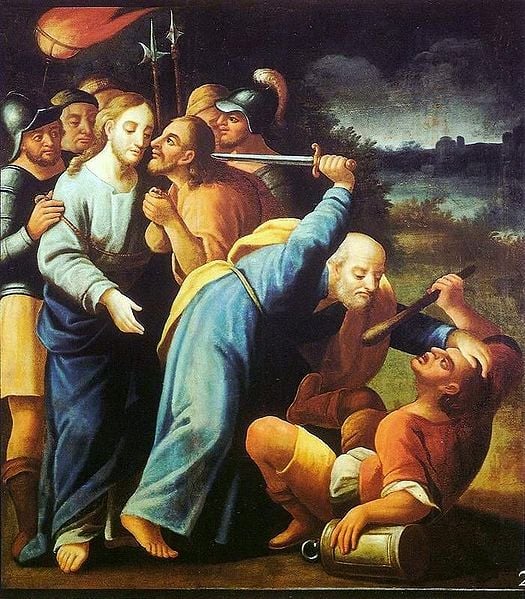According to the official style guide of The Church, “Mormon” implies an individual, not an institution. But while it can be a label for a person, “Latter-day Saint” remains the preference. “Mormons” the guide explains, is “acceptable.”
And acceptable it is. Swaths of Latter-day Saints have now deemed themselves “Mormons,” not only in speech but in their Facebooking. The words “I’m a Mormon” (or “ Soy Mormon,” or perhaps even “Ich bin ein Mormone,” but lets not get ahead of ourselves) are now accompanied by a vibrant — as vibrant as purple or orange can be, anyhow — colored square, and a delightfully sans-serif font. Probably Helvetica.
Helvetica is likely the least threatening of all fonts. Orange is unquestionably the least memorable of all colors. Without the passion of red or the vibrancy of yellow, orange exists to remind us all that compromise is The Devil’s way of boring us to death. The same goes for purple.
But to be perfectly honest, I pray for the mercy of compromise. The hope of compromise is what keeps my mind clear as I wrestle with hard things in Holy Scripture. I dip in and out of doubt as I encounter life on my own terms, with my own understanding (the very one I am admonished not to lean on). Just when the world is being invited to meet us on big-shot Hollywood screens, I struggle to understand if I’m a burden to my tiny but lovely congregation. I hope their willing to bear with me.
But things are looking up for the broader spectrum of belief. There are conference talks and Deseret Book selections admonishing us all to come together in our doubts, embrace hard truths and work toward a more complete vision of Zion. We’ve come a long way since young Paul Toscano’s bishop gave him a tongue lashing for mentioning that Joseph Smith was a polygamist.
But of course it’s not that simple, either. I can devour books, books that I have no business reading with my armchair intellect. Books that use words like “exegesis” and refer to the first three books of the New Testament as the “synoptic gospels.” I can read those kinds of books, love them, and understand roughly one-third of their content. My testimony may grow and morph in directions I didn’t even know were possible in my spiritual cartography. But then what?
Suddenly, I’m the one getting off-topic in Elder’s Quorum. I’m the one missionaries are worried will start babbling on about how interpretations of the Word of Wisdom have changed over time. Then the kind man three metal chairs to the right raises his hand and says, “When it all comes down to it, the only thing God requires of us is that we follow his prophets.” In an instant I realize that for my whole life I’ve been worshiping a different divine than the man sitting next to me. Zion crumbles. We are brothers, co-stonemasons in the construction of Zion, but we serve two masters. Zion crumbles and it’s all my fault.
Then Terryl Givens’ new book on Mormon theology, Wrestling the Angel, comes along to take the edge off. This new “first volume” in a “magisterial study of the foundations of Mormon thought” (as Oxford University Press calls it) strikes directly at my hopes and fears, making my love of the faith both more fulfilling and increasingly complicated in one 350-page swell.
As it begins, the morning breaks and the shadows flee; Givens recounts the historical and theological significance of the Mormon concept of restoration. “Restoring [the] loss of priesthood authority, and consequently of the proper forms of ‘true order’ and ‘true worship,’ was the great project Saints understood as the purpose of Smith’s ministry.” Wonderful. Of course. Mormonism is restoration, a great uniting principle among believers.
But it doesn’t stop there. With all the talk of The Vulnerable God and The Fortunate Fall, Givens also narrates the complex histories of belief in The Adam-God theory, Mother God, and — to the tune of 59 pages — theosis.
The Mormon doctrine of theosis is always what really gets me. In those dark moments when I struggle to hold on to my faith, remembering theosis is what keeps me grounded, ironically enough. It’s not the notion of becoming a god that invigorates me, but the great big ladder spoken about in The King Follett Discourse. Eternal upward mobility, progress without end. But alas, The King Follett Discourse is not canon.
But as Givens points out, “canon” in Mormon thought is not a terribly simple concept. “Mormons expand not only the scriptural canon but also the definition of scripture itself,” he writes. Wrestling the Angel acts then, at least for me, not only as an interesting compilation of the “foundations of Mormon thought,” but as a sort of menu. Now I can search this catalogue of ideas to build up my personal canon, as long as I feel it meets the standard set in Doctrine and Covenants 68:4. “And whatsoever they shall speak when moved upon by the Holy Ghost shall be scripture.” Sure, many of the passages, such as the section on Adam-God, functioned for me mostly as interesting academic studies of Mormon intellectual history. But other sections, such as the one on “Eternal Becoming,” caused my faith to swell.
But swollen faith and a reshaped canon can come with frustrations. Angel serves as a brisk reminder that, as Givens puts it early in his book, many of us seem to have a “diminishing excitement about the unbound range of Smith’s vision.” The Mormonism in Angel is certainly unbound. So how do I make use of that boundlessness?
It certainly isn’t easy, at least as far as I can tell. Like reading Ken Kesey’s prose or trying to understand Dennis Miller’s politics, finding a way to unbind my Mormonism without ruffling the wrong feathers is a tough task. That’s why, as things shift and change, and as I work to suppress my own inner Korihor, I fight to remember that complex does not equal bad. Nuance in matters of faith is no vice. The “Mormon” in me is to be embraced, Helvetica be damned.











